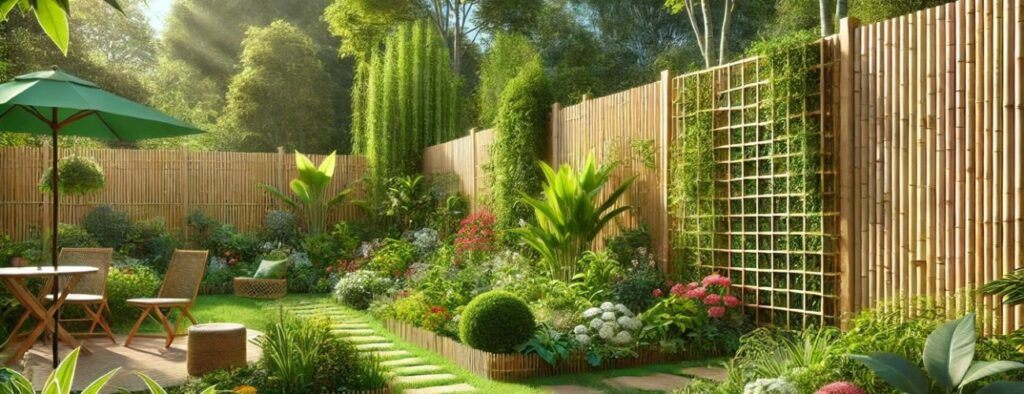Sustainable landscaping is ideal for homeowners designing an aesthetically pleasing and environmentally responsible landscape. It integrates principles that support local ecosystems, conserve water, and minimize maintenance. Whether you are a seasoned gardener or a novice, numerous landscaping services are available to help you create a beautiful, sustainable garden. This approach goes beyond visual appeal, focusing on long-term environmental benefits and resource efficiency. The practice fosters a healthier ecosystem and creates a tranquil, enjoyable space in your backyard.
Benefits of Sustainable Landscaping
Sustainable landscaping offers numerous advantages for the environment and property owners. Using native plants, efficient irrigation systems, and organic fertilizers, sustainable landscapes require less water, reduce waste, and support local ecosystems. These practices also lower maintenance costs and create healthier outdoor spaces more resilient to climate change and pests. Additionally, sustainable landscaping can enhance the aesthetic appeal of a property while contributing to environmental conservation. For those interested in making eco-friendly improvements and exploring landscaping services Kent can provide the expertise needed to create a beautiful and sustainable outdoor environment.
Choosing Native Plants
An essential component of sustainable landscaping is native plants. Because these plants have adapted to grow in their particular environment, they are more straightforward to maintain. Compared to non-native species, they usually need less water, fertilizer, and pesticides. Furthermore, native plants provide the local fauna with vital habitats and food supplies. Any sustainable landscaping project must be successful in choosing the appropriate species. To find species native to your area, the National Wildlife Federation’s Native Plant Finder is an excellent resource. This tool can help you identify plants that will support local biodiversity while enhancing the beauty of your garden. By choosing native plants, you make your gardening tasks easier and contribute to preserving your region’s natural heritage, creating a haven for indigenous flora and fauna.
Implementing Water Conservation Techniques
One of the most critical aspects of sustainable landscaping is water conservation. Effective strategies include mulching, which helps retain soil moisture and using drought-tolerant plants that require minimal watering. Collecting rainwater in barrels for garden use and installing drip irrigation systems are other excellent methods for conserving water. Drip irrigation minimizes waste by delivering water straight to plant roots and guarantees that plants get the moisture they require without being overwatered. Additionally, you can maximize water use by combining plants that require equal amounts of water. Beyond these techniques, creating rain gardens and using permeable pavers can help manage stormwater runoff, turning potential water waste into a resource for your garden. These systems are not only practical but can also be aesthetically pleasing, adding unique elements to your landscape design.
Creating a Compost System
Composting is an easy and highly effective way to recycle organic waste and enrich soil. In addition to giving your plants vital nutrients, composting kitchen trash can help cut down on the quantity of waste dumped in landfills. Composting can be done in a sophisticated compost bin or a simple pile. The key is to balance green materials (like kitchen scraps) with brown materials (like dried leaves) to create nutrient-rich compost that supports healthy plant growth. This balanced mix encourages the breakdown of organic materials into rich, dark compost, which can significantly improve soil structure, water retention, and plant health. Composting benefits your garden and fosters a more sustainable lifestyle by reducing waste and enhancing productivity.
Reducing Lawn Size
Traditional lawns can be resource-intensive, requiring significant amounts of water, fertilizers, and time for mowing. Adjusting the dimensions of your lawn or getting rid of it completely can significantly lessen your environmental footprint. Consider substituting some of your lawn with ground covers, native bushes, or hard surfaces. Ground covers like clover are resilient and need less water and upkeep than regular grass lawns. Additionally, these alternatives can provide year-round color and interest, making your garden more visually appealing and diverse. By cutting down on lawn space, you not only save on water and maintenance but also create opportunities to incorporate a variety of plant species that contribute to a more resilient and vibrant ecosystem.
Integrating Hardscapes
Hardscaping involves using non-plant elements such as stone, wood, and metal to enhance your garden’s functionality and appearance. Incorporating features like patios, walkways, and retaining walls can reduce the amount of watered area and provide durable, attractive spaces for outdoor activities. Hardscapes add structure to your garden and improve its usability and aesthetic appeal. Thoughtfully designed hardscape elements can blend seamlessly with the natural environment, offering a serene extension of your living space. Additionally, they can help manage landscape erosion and direct water flow more effectively, creating a balanced and low-maintenance garden.

